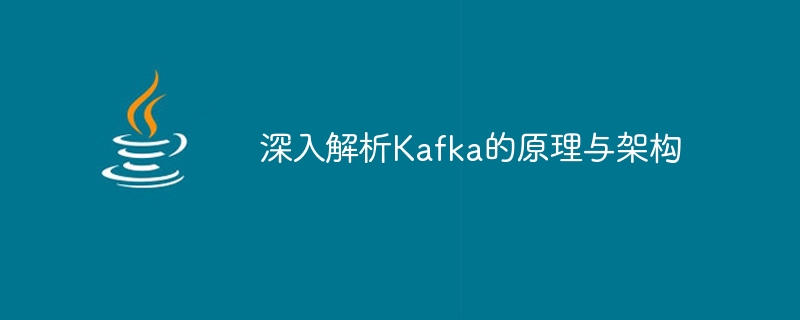Home >Java >javaTutorial >Detailed analysis of Kafka principles and architecture
Detailed analysis of Kafka principles and architecture
- PHPzOriginal
- 2024-02-01 08:12:15970browse

The principle and architecture of Kafka
Principle
Kafka is a distributed stream processing platform , which can handle large data streams. Kafka uses a publish-subscribe model to process data streams. Producers publish data to Kafka, and consumers subscribe to data streams in Kafka and consume the data.
Kafka uses a mechanism called "partitioning" to store data. Each partition is an independent storage unit that can store a certain amount of data. Kafka evenly distributes data into various partitions, which can improve Kafka's throughput and availability.
Kafka also uses a mechanism called "replication" to ensure data reliability. Data for each partition is replicated to multiple replicas so that even if one replica fails, the data will not be lost.
Architecture
Kafka’s architecture mainly includes the following components:
- Producer: The producer is A component that publishes data to Kafka. A producer can be any application that publishes data to Kafka through Kafka's API.
- Consumer: Consumer is the component that subscribes to the data stream in Kafka and consumes the data. A consumer can be any application that subscribes to a data stream in Kafka and consumes data through Kafka's API.
- Agent: A broker is a node in a Kafka cluster. Agents are responsible for storing data and processing data flows.
- ZooKeeper: ZooKeeper is a distributed coordination service that manages agents in a Kafka cluster.
Code Example
The following is a simple code example using Kafka:
// 创建一个生产者
Producer<String, String> producer = new KafkaProducer<>(properties);
// 创建一个消费者
Consumer<String, String> consumer = new KafkaConsumer<>(properties);
// 订阅一个主题
consumer.subscribe(Collections.singletonList("my-topic"));
// 发布一条消息
producer.send(new ProducerRecord<>("my-topic", "hello, world"));
// 消费消息
while (true) {
ConsumerRecords<String, String> records = consumer.poll(100);
for (ConsumerRecord<String, String> record : records) {
System.out.println(record.value());
}
}This code example demonstrates how to use Kafka to publish and consume news.
Summary
Kafka is a distributed stream processing platform that can handle large amounts of data streams. Kafka uses a model called "publish-subscribe" to process data streams, and uses a mechanism called "partitioning" and "replication" to improve Kafka's throughput, availability, and reliability. Kafka's architecture mainly includes four components: producer, consumer, agent and ZooKeeper.
The above is the detailed content of Detailed analysis of Kafka principles and architecture. For more information, please follow other related articles on the PHP Chinese website!

